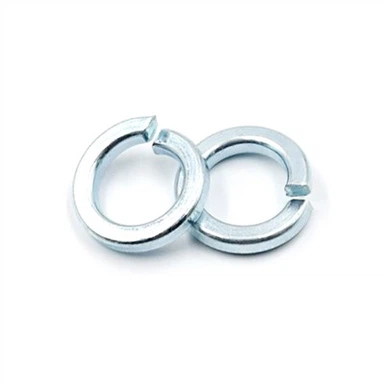Characteristics Of 316L Stainless Steel Bolts
Sep 25, 2025
As professionals in the industry, I would like to ask everyone: Do you often encounter customers who clearly require stainless steel bolts made of SUS316 material? When many salespeople face this request, they subconsciously assume the customer is asking for 316 material bolts. They think that since the only difference is the letter "L", there should be no major distinction. Little do they know that this single letter difference translates to vast disparities in material properties and applicable scenarios.
If the design drawing clearly specifies the bolt material as "316L", it means only this 316-series stainless steel with "L" can be used in that environment. Although no difference can be seen from the bolt's appearance, the distinction between 316 and 316L becomes clear when conducting a metal composition spectral analysis (not "metal detection") to test their element content.
First, let's look at the element content (by mass percentage, in accordance with China National Standard GB/T 20878 or international standard ASTM A240, tested at room temperature) of SUS316 stainless steel: carbon (C) content ≤ 0.08%, silicon (Si) content ≤ 1.00%, manganese (Mn) content ≤ 2.00%, phosphorus (P) content ≤ 0.045%, sulfur (S) content ≤ 0.030%, chromium (Cr) content 16.00%-18.00%, nickel (Ni) content 10.00%-14.00%, copper (Cu) content ≤ 0.75%, and molybdenum (Mo) content 2.00%-3.00%. Only materials that meet the above element content range can be considered standard-compliant 316 stainless steel. Now that we understand the properties of 316 stainless steel, let's examine the element content of 316L stainless steel to see their specific differences.
The element content requirements (also by mass percentage, in accordance with the corresponding standards) for SUS316L stainless steel are: carbon (C) content ≤ 0.03%, silicon (Si) content ≤ 1.00%, manganese (Mn) content ≤ 2.00%, phosphorus (P) content ≤ 0.045%, sulfur (S) content ≤ 0.030%, chromium (Cr) content 16.00%-18.00%, nickel (Ni) content 10.00%-14.00%, and molybdenum (Mo) content 2.00%-3.00%.
A comparison shows that the core differences between the two lie in carbon content and nickel content: 316L has a much lower carbon content (≤ 0.03%) than 316 (≤ 0.08%), making it an ultra-low carbon stainless steel. At the same time, both the upper and lower limits of 316L's nickel content range are slightly higher than those of 316, which gives 316L better corrosion resistance, especially against intergranular corrosion.
These properties allow 316L stainless steel bolts to be widely used in marine equipment (resistant to high salt spray environments), medical equipment (resistant to corrosion from disinfectants), and welded scenarios such as flange pipe fittings. The ultra-low carbon content prevents intergranular corrosion caused by carbide precipitation during welding, ensuring the corrosion resistance of welded joints.
In addition, 316L stainless steel can also be used in the food industry because its heavy metal leaching rate is extremely low, making it basically harmless to the human body. Even some implantable parts used in heart bypass surgery are made of 316L stainless steel. Its ability to be applied in the industrial chemical field stems from the presence of molybdenum (Mo) - molybdenum significantly enhances the material's resistance to pitting and crevice corrosion caused by chlorine-containing, acid-containing, and other corrosive media, rather than "adapting to ultra-high temperatures" (the continuous service temperature of 316L is generally not higher than 800°C, and high-temperature resistance is not its core advantage).







